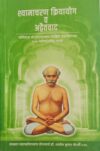Bigger significance being God made His Advent as Bhagwan Ram at the end of Tretayuga but Ramayana was composed by His manifestation, Valmiki, as Lord Krishna at the end of Dwaparyuga but Mahabharata and Gita was composed by His manifestation Krishna Dvaipayana-Vyasdeva and likewise as Shamachurn Lahiree God at the end of Kaliyuga and ‘Purana Purusha’ was authored by His own manifestation Mahamahopadhyaya Yogacharya Dr. Ashoke Kumar Chatterjee. Thus in this manner at the transition of each yuga in accordance with its respective necessity, God establishes His own ideals.
God makes His Advent only at the juncture of two yugas when humanity suffers a religious decadence. He wholly manifests Himself in the Form of a Human Being to enable us mortals to come closer to Him, to enable us to divulge all our afflictions and joys to Him and also in order to impart His teachings to us. If He appears in any other Form, it would never be possible for us to be close to Him. Being born as a Mortal, He does not break His own rule i.e. He has to abide by the mortal afflictions, sorrows, etc. This rigorous discipline on His part is intended for our upliftment and knowledge.
Only Yogiraj having the Divine Prerogative to attain the post attainment state of merging has recounted this and thus declared the Omnific Words — ‘I Am God’ in His diary which the reader will glean from Chapter-IX. Shama Churn is Indefinable, Unquestionable, Non-answerable, Incomparable, Nondebatable, Unconfinable, Indivisible. He can be defined as; questionable to; answerable to, compared with; debated for and against; confined within; divided by; none other than Shama Churn Himself.
He is Unquestionable for He is Univocal. He is the Only and Eternal Truth. This was, is and will be the Absolute Knowledge. So no matter how hard various factions try to establish their credentials in Shama Churn’s name, they will die a natural death, for pretentiousness in the name of the Primordial and Absolute cannot exist for long.
As we go, through the book ‘Purana Purusha’, we will note that Shama Churn Lahiree had informed about His Departure to His wife Kashimani Devi six months in advance and had asked her to retain His Mortal Frame in the padmâsana posture or to place this under the ground of the same room after His Departure, for He would mark His Readvent. For reasons best known to Him, Kashimani Devi completely forgot this, hence His Mortal Frame was cremated.
Hence, the question is why did He decide to make His Readvent? The reasons are :—
1. To compile all His sÄdhanÄ realisations recounted in His twenty-six confidential diaries in the form of a revived scripture.
2. The mammoth significance of the scripture in this age was foreseen, for His principal aim was to reestablish His Own ideals and give declining KriyÄyoga a push. Thus in this manner at the transition of each yuga in accordance with it’s respective necessity, God establishes His Own ideals.
3. The world has already entered into Satyáyuga after His Departure, but the influence of Káliyuga still persists. The golden influence of Satyáyuga will attain it’s full bloom within a short period. He decided to usher humanity into the golden efflorescence of Satyáyuga and depart.
4. To issue summons to mankind :— “Arise, awake, you have enjoyed enough, suffered enough, known enough. The goal of your human existence should be solely one i.e. to seek salvation. Drown yourself totally in this KriyÄyoga sÄdhanÄ for if not in this birth, within the successive few births you will inevitably attain salvation.”
‘’PurÄá¹á Púrusha’ is a composite scriptural work by venerable Yogacharya Dr. Ashoke Kumar Chatterjee intended to be a biography. But in course of time as KriyÄyoga gradually spreads it’s tentacles throughout the world, it will bind man towards it and make him realise…



